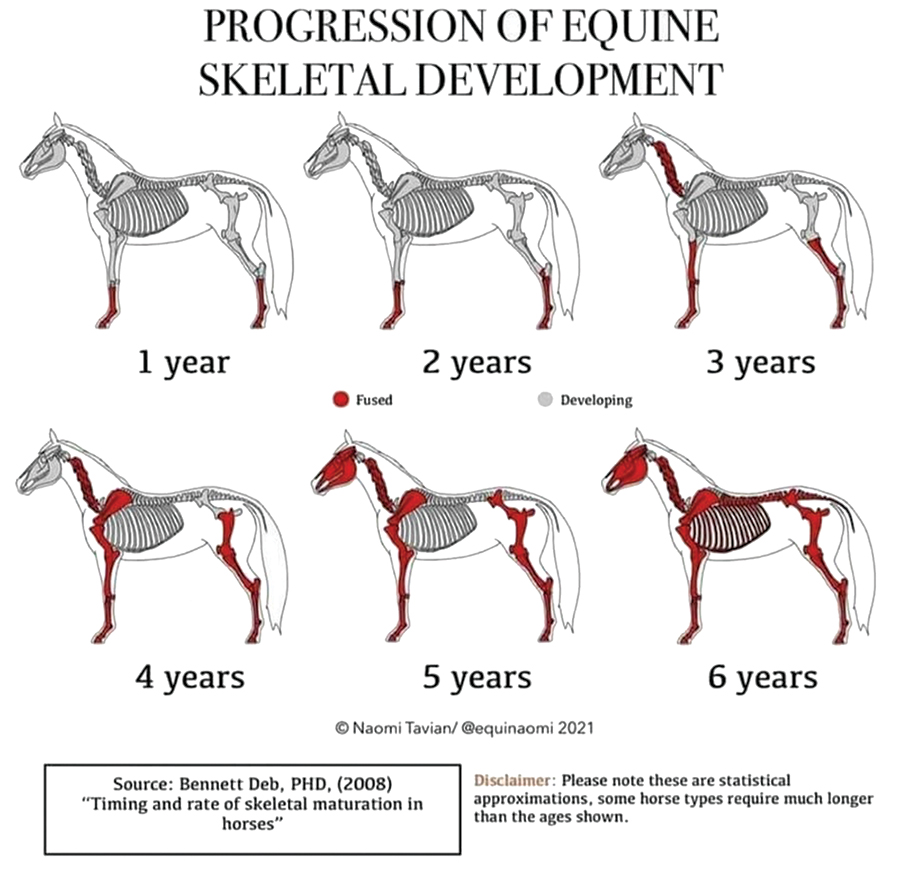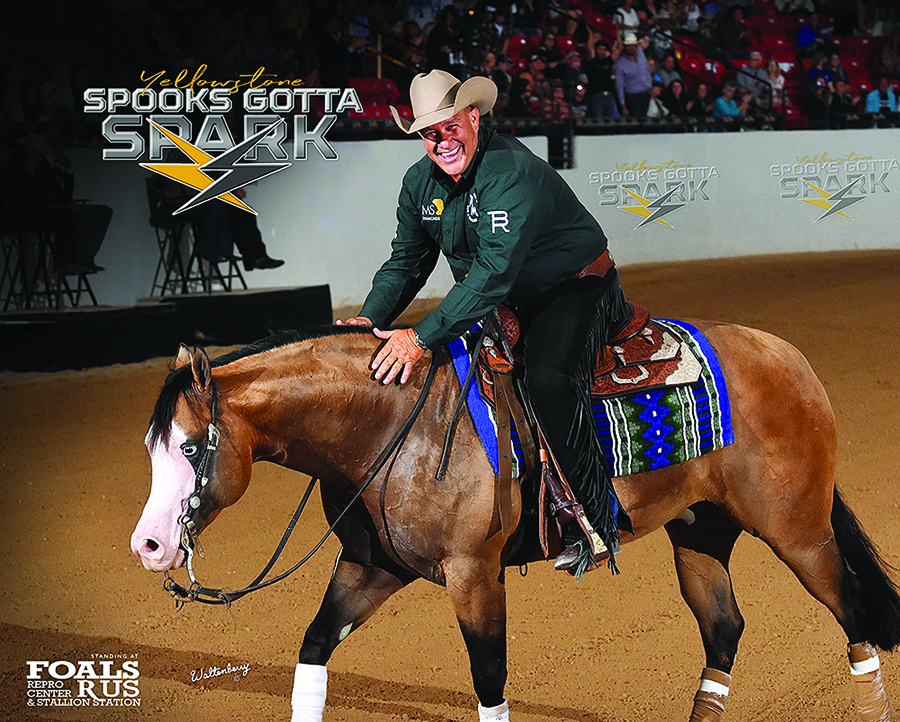
Part 2 – In praise of the older horse
In the last issue of The Rider, Sharon and I had a conversation about longevity with horses, and does our growing need for instant gratification seep in to the need for fast results in the horse world – and the answer to that was a resounding – yes.
After we’d sent the article off to Barry at The Rider, I was browsing Facebook and saw this image – and it immediately connected me to an aspect of horse longevity we didn’t discuss but is at the core of it all.
That’s the age of the horse and its skeletal development.
\Our sport (Reining) is not known for seeing that many older horses; and I understand why. The joy of working with a younger horse and teaching it how to carry a rider, hold itself in frame, to be balanced and willing; to go with the most minimal of cues and to then teach it how to do the reining manoeuvres is an absolute thrill.
Riding a well-trained and well-seasoned horse who knows their job is rewarding of course but not as thrilling in that – you know what the horse is capable of. In a young horse, that’s the journey of discovery and you work with the horse to see whether they are inclined towards Ranch Riding, Reining, or some other discipline. We always want to work with the horse to know what they want to do, I’ve worked with many fabulous horses, but they did not all want to be Reiners.
Which brings me to this image – the skeletal growth of a horse.
We know there are studies that prove starting a horse at a younger age with light riding in shorter spurts can boost the horse’s bones and ligaments, it can reduce injury risk, it supports joint health, and the horse can have a longer athletic career.
This image gives the general guidelines of how a horse matures and by what age their bones fuse together, some horse breeds may take longer or shorter but generally, a horse is not fully mature until they are around six.

But there’s a caveat – a very big, caveat, around starting horses young.
Gradual introduction over the initial years is key, overworking should be absolutely avoided and regular check-ins with the horse to ensure they are not in pain help to prepare the horse for life.
We can use the analogy of human beings, depending on the gender the age range of skeletal fusion for humans is between 13 – 17, to compare what often happens with horses.
So your 10-year-old kid who may show talent for running, you know instinctively you’d encourage them, but you wouldn’t sign them up for the Boston Marathon because of the potential damage you could incur on someone such a young age. Ruining the kid’s skeletal growth, risking ligament and muscular damage for the rest of the kid’s life is something most sane parents would not even consider.
At least though the kid could cry out in pain or let you know they were damaged some way – but horses don’t do that. They are beyond stoic in their ability to mask pain, something that evolution has helped the horse develop so it’s not seen as easy prey.

When we ran our horse shows (J&J Reining Inc.) we believe 100% in the magic of the older horse; it’s why we never held a Futurity (in North America futurities are for 3-year-olds, in Europe, 4-year-olds). Not all 3-year-olds have the body to cope with the demands of a futurity. We instead focussed on the Maturity, an aged event for horses 8+. This year specifically we ran two separate aged events.
And of course, there are exceptions to the young horse only focus – take Shawn Flarida who brought Spooks Gotta Spark, the 2013 Buckskin stallion, out of retirement for this year’s Run for a Million and was Reserve Champion. Imagine that… a horse of 13 years old beating all that young talent!
This all goes hand-in-hand with my last article of Longevity with the horse – taking care of these equine athletes is a privilege and a journey, and should always go at the horse’s pace.
Just as we were about to send this article to Barry, I saw this from Clinton Anderson https://www.instagram.com/reel/DQR9RbEj9mX/ where with his renown no-nonsense approach to horse training, he discusses the topic of starting horses at a young age.
-----------------
'From the Trainer's Eye articles written by Jen Jonas of Jonas Performance Horses and one of her students, Sharon Jones of Be A Better You Inc. Both Jen and Sharon are believers in continuous learning - if you're not learning you are not growing'


